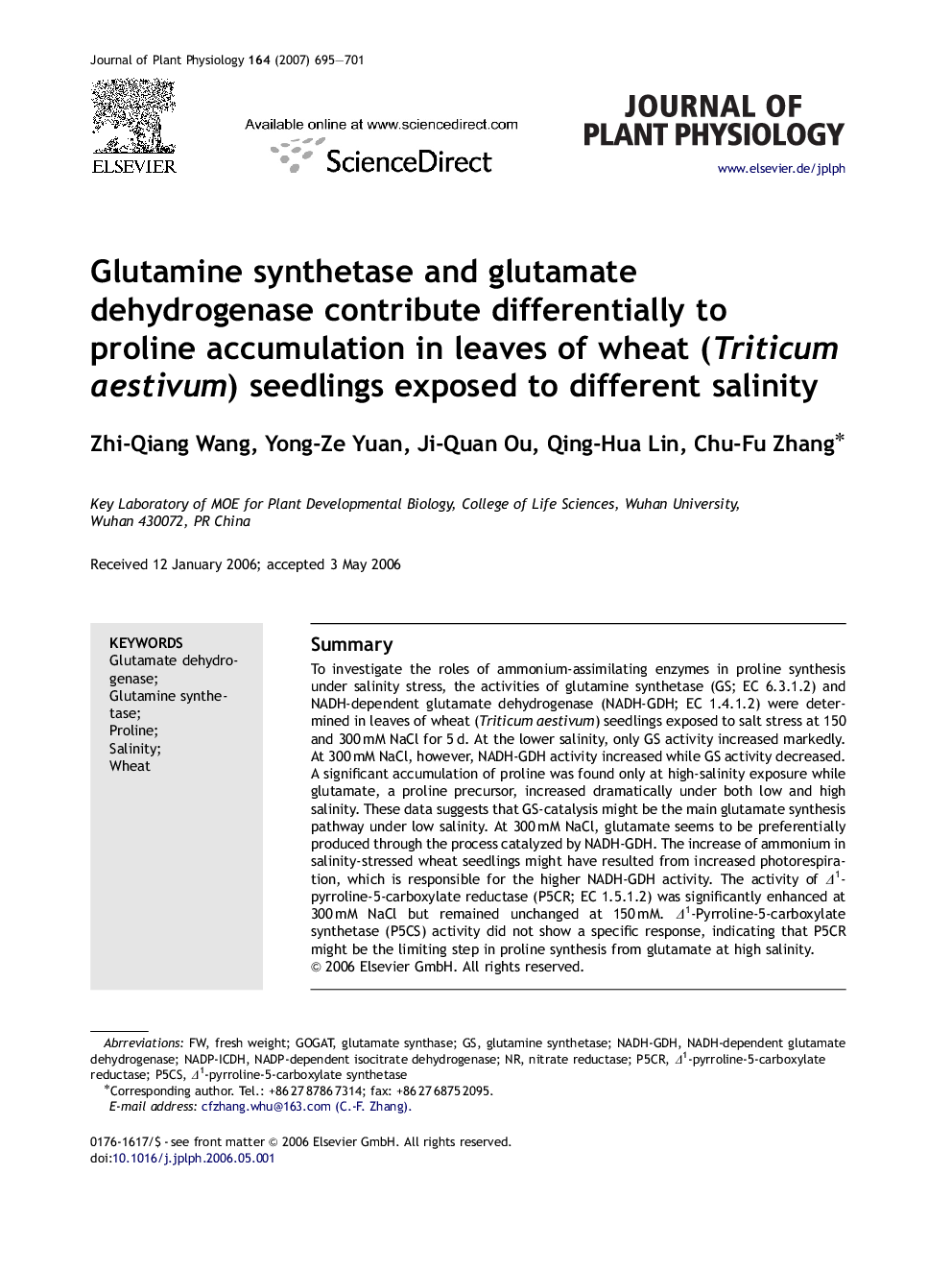| Article ID | Journal | Published Year | Pages | File Type |
|---|---|---|---|---|
| 2057503 | Journal of Plant Physiology | 2007 | 7 Pages |
SummaryTo investigate the roles of ammonium-assimilating enzymes in proline synthesis under salinity stress, the activities of glutamine synthetase (GS; EC 6.3.1.2) and NADH-dependent glutamate dehydrogenase (NADH-GDH; EC 1.4.1.2) were determined in leaves of wheat (Triticum aestivum) seedlings exposed to salt stress at 150 and 300 mM NaCl for 5 d. At the lower salinity, only GS activity increased markedly. At 300 mM NaCl, however, NADH-GDH activity increased while GS activity decreased. A significant accumulation of proline was found only at high-salinity exposure while glutamate, a proline precursor, increased dramatically under both low and high salinity. These data suggests that GS-catalysis might be the main glutamate synthesis pathway under low salinity. At 300 mM NaCl, glutamate seems to be preferentially produced through the process catalyzed by NADH-GDH. The increase of ammonium in salinity-stressed wheat seedlings might have resulted from increased photorespiration, which is responsible for the higher NADH-GDH activity. The activity of Δ1-pyrroline-5-carboxylate reductase (P5CR; EC 1.5.1.2) was significantly enhanced at 300 mM NaCl but remained unchanged at 150 mM. Δ1-Pyrroline-5-carboxylate synthetase (P5CS) activity did not show a specific response, indicating that P5CR might be the limiting step in proline synthesis from glutamate at high salinity.
